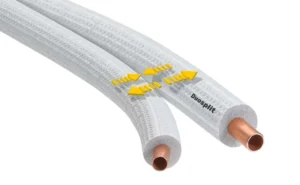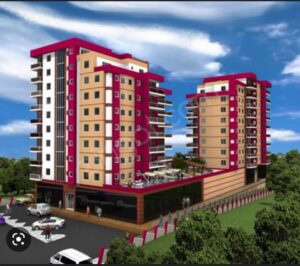How Spinal Cord Stimulation Can Remedy Sciatica and Back Pain
Chronic back pain and sciatica can significantly impact daily life, making even simple activities difficult. For individuals who have not found relief through conventional treatments, spinal cord stimulation (SCS) offers an advanced, minimally invasive solution. Dr. Arun Rajeswaran, a leading neurosurgeon and spine specialist in Dubai, provides expert insights into how spinal cord stimulation can help manage sciatica and chronic back pain effectively.
Understanding Sciatica and Chronic Back Pain
Sciatica refers to pain that radiates along the sciatic nerve, which extends from the lower back down to the legs. It is often caused by conditions such as:
- Herniated Discs: When spinal discs press on the sciatic nerve.
- Spinal Stenosis: Narrowing of the spinal canal.
- Degenerative Disc Disease: Wear and tear of spinal discs over time.
- Spondylolisthesis: A condition where one vertebra slips over another, pinching the nerve.
- Muscle Spasms: Tightened muscles can press on the sciatic nerve, causing pain.
Chronic back pain, on the other hand, can stem from various conditions like arthritis, muscle strain, or failed back surgery syndrome (FBSS). Left untreated, these conditions can severely impact mobility and overall well-being.
What is Spinal Cord Stimulation?
Spinal Cord Stimulation (SCS) is a pain management technique that involves implanting a small device under the skin. This device delivers mild electrical impulses to the spinal cord, interrupting pain signals before they reach the brain. By modifying pain perception, SCS helps patients regain mobility and improve their quality of life. Unlike traditional pain management approaches that focus on medication or physical therapy, SCS offers long-term relief with minimal side effects.
How Spinal Cord Stimulation Works
- Trial Phase: A temporary electrode is placed near the spinal cord to assess effectiveness. Patients typically use the device for a few days to determine if they experience pain relief.
- Implantation: If successful, a small generator is implanted under the skin, typically in the lower back or abdomen. The electrode remains connected to the spinal cord to deliver electrical impulses.
- Pain Modulation: The device sends electrical pulses to the spinal cord, reducing pain signals before they reach the brain. This alters the way the nervous system perceives pain.
- Adjustable Therapy: Patients can control stimulation levels using an external remote, allowing them to customize their treatment based on their pain levels.
Benefits of Spinal Cord Stimulation
- Minimally Invasive: Unlike traditional spine surgeries, SCS requires a small incision and has a quicker recovery time.
- Reduced Dependence on Pain Medication: Many patients reduce or eliminate the need for opioids and other painkillers, decreasing the risk of dependency.
- Improved Mobility: Decreased pain allows for better movement and enhanced daily function, helping patients return to normal activities.
- Customizable Treatment: The device can be adjusted to deliver personalized pain relief depending on activity levels and pain intensity.
- Reversible Procedure: If ineffective, the device can be removed without permanent alterations to the spine, making it a low-risk treatment option.
- Non-Drug Alternative: With growing concerns about opioid addiction, SCS offers a safer, drug-free approach to pain management.
Who is a Candidate for Spinal Cord Stimulation?
Patients suffering from persistent back pain or sciatica who have not responded to conventional treatments may benefit from SCS. Ideal candidates include those who:
- Have chronic pain lasting more than six months.
- Have not found relief from physical therapy, medication, or injections.
- Have undergone spine surgery but still experience pain (failed back surgery syndrome).
- Are not ideal candidates for major spinal surgery due to age or underlying health conditions.
- Do not have untreated infections or psychological conditions that affect pain perception.
- Are seeking a non-opioid alternative for managing pain.
The Recovery Process After SCS Implantation
Patients undergoing spinal cord stimulation implantation typically recover within a few weeks. During the initial recovery period:
- Light activities can be resumed within a few days, but heavy lifting and strenuous exercise should be avoided for about 6 weeks.
- Patients may experience some discomfort at the incision site, which gradually improves.
- Adjustments to the device settings may be required to optimize pain relief.
- Follow-up visits with Dr. Arun Rajeswaran ensure the device is functioning properly and providing maximum benefit.
Conclusion
Spinal Cord Stimulation is a groundbreaking treatment that offers hope to individuals struggling with chronic back pain and sciatica. With its ability to reduce pain and improve quality of life, SCS is an excellent option for patients seeking long-term relief. Unlike traditional pain management methods that rely on medication, SCS provides a long-term, drug-free alternative that improves daily functionality.
Dr. Arun Rajeswaran specializes in advanced spine treatments, including spinal cord stimulation, helping patients regain comfort and mobility. If you’re experiencing persistent back pain or sciatica, consult Dr. Rajeswaran to explore whether SCS is the right solution for you. Schedule an appointment today to take the first step toward a pain-free life.














Post Comment